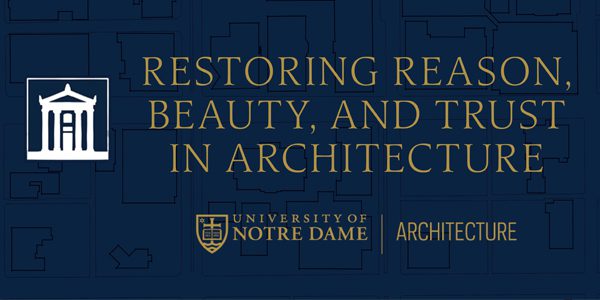An Irish Christmas at Kylemore – Sacred Music for Advent and Christmas: From Gregorian Chant to Jazz Improvisation
Subscribe to the ThinkND podcast on Apple, Spotify, or Google.
Featured Speakers:
- Mark Doerries, Director of the Notre Dame Children’s Choir and Director of Graduate Studies for Sacred Music, University of Notre Dame
- J.J. Wright, Jazz Pianist and the Director of the Notre Dame Folk Choir, University of Notre Dame
- Lisa Caulfield, Director of the Notre Dame Global Center at Kylemore Abbey, University of Notre Dame
The final installment of the Irish Christmas at Kylemore series highlighted the music created by Mark Doerries, the Director of the Notre Dame Children’s Choir and the Director of Graduate Studies for Sacred Music at the University of Notre Dame, and J.J. Wright, a Jazz Pianist and the Director of the Notre Dame Folk Choir. The session was moderated by Lisa Caulfield, the Director of the Notre Dame Global Center at Kylemore Abbey. Throughout the session, they discussed their collaboration on the composition and performance of the album “O Emmanuel” and their passions for working with the children in the Notre Dame Children’s Choir. Though jazz is not often thought of as a sacred form of music, both Doerries and Wright have worked towards changing that perception. They both see jazz music as a dialogue between the singer and the listener, and believe that it can foster a deeper relationship with God. The session also featured recordings from the “O Emmanuel” album, as well as other Christmas music performed and recorded by the Children’s Choir.
The session began with a video introduction to the Notre Dame Children’s Choir, a choir for children of the South Bend area, ranging from very young to high school aged. The directors, composers and musicians that work with the children in this choir expressed their passion for bringing music to life and creating an environment for the children that appreciates music and fosters creativity. As the session moved into a live discussion with the featured musicians, Doerries discussed his love for working with young singers and engaging with the timeless Catholic tradition of putting children at the center of music. His goal in engaging young singers is to facilitate a shift from a choir performance to an interactive dialogue, allowing the children he teaches to interpret the music themselves and experience the piece differently each time they perform it. Wright also expressed his passion for working with children through the choir and mentioned that he now has college students in his Folk Choir that he worked with in the Children’s Choir. Both musicians talked about the children’s ability to learn new genres and songs, approaching new music with no preconceived notions. They have the ability to focus only on their love for music and inspire those that hear them.
The discussion then shifted to the juxtaposition of Gregorian Chant and Jazz in “O Emmanuel”. Both musicians expressed an appreciation for both forms of music, but explained their motivation in combining the two as looking at the ancient works through a new lens. The words and melodies of the Gregorian Chant are historic and important, yet adding new jazz melodies creates a new cloud of sound for the listener. Wright discussed the inspiration he found in the O Antiphons and the continuous story he sought to create for listeners. Both Wright and Doerries also discussed the periods of improvisation within “O Emmanuel”. These movements in the piece allow the instrumentalists and singers to choose the notes and rhythms for a portion of the song. This art takes practice and gives the children a voice in how the piece is performed.
Caulfield then played a recording from “O Emmanuel” before sending participants to discuss the similarities and differences between the two pieces played in breakout rooms. After coming back to the main session, Caulfield facilitated a question and answer period that focused on the history of the children’s choir and how their music has been impacted by the coronavirus pandemic. Doerries explained that the children’s choir was founded 8 years ago and has reached a yearly participation of 250-300 children. He has also created a choir for children with special needs so that no child feels left out. Despite the pandemic and the need to move rehearsals online, the students’ passion and commitment to both the Children’s and Folk Choirs remains strong. Caulfield concluded the session by playing a recording of Joy to the World recorded by the Children’s Choir.
- Though it is not traditionally thought of in this way, jazz is emerging as a sacred form of song and can be used to foster a deeper relationship with God. (9:02)
- Music can be an interactive dialogue between the performer and the listener. (9:34)
- Ancient Gregorian Chant is a treasured, sacred art form, but adding new melodies allows for a new perspective on them and the creation of a new sound. (19:01)
- Children approach music in a different way than adults. Instead of dwelling on the genre and whether or not it is appropriate, they focus on its beauty and their love of singing. (22:22)
- Learning a piece that has never been performed requires discernment of what the composer intended when writing it. (24:44)
- “When you think about the connections of asking God to be present in your music and inform what you’re playing, the idea of listening to each other and listening to God’s spirit go hand in hand.” (Ike Sturm, 5:56)
- “One of the unique things about jazz is that the music itself is always different. Jazz becomes a conversation between the musicians who are performing and the people who are partaking.” (J.J. Wright, 9:34)
- “You hear the original melody, but then you hear kids underneath it singing embellishments on the melody, fragments of the melody overlayed to create a cloud of sound around the original ancient melody.” (Mark Doerries, 19:01)
- “The more different genres we gave to them, the more excited they were. They never questioned whether it was appropriate or not, they just thought this is beautiful music and I like singing it and it has this beautiful sacred text.” (Mark Doerries, 22:22)
- “Working with children we focus not only on the end goal of the performance, but we’re also teaching them how to read music along the way.” (Mark Doerries, 24:38)
- “Improvisation is akin to giving a speech, the type of speech you want to deliver in the moment.” (J.J. Wright, 27:02)
Related Content
How Cities Speak To Us
Professor Emily Talen joins the School of Architecture to share her work at The Urbanism Lab and its focal point at the University of Chicago for the study of the built...
View EventThe Black National Anthem & Parent’s Signing Off On Children Reading Black Books
In this week’s episode, Isaiah and Tykiera talk about some tweets about Black people that took Twitter by storm. They also talk about The Black National Anthem, Lift Every Voice...
watch videoTrusted AI Needs Trusted Data
In the buzz around AI, let’s not ignore the role of data for developing AI we can trust, says one Notre Dame computational scientist. Two years ago, Notre Dame launched the...
Read Article


